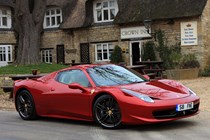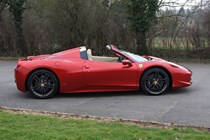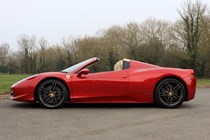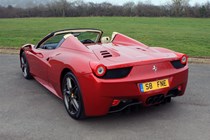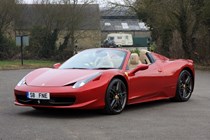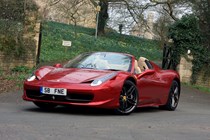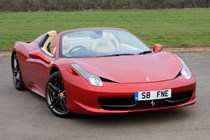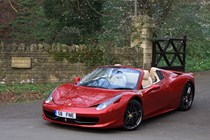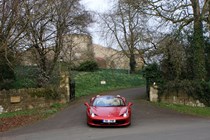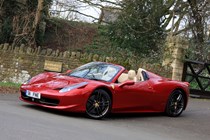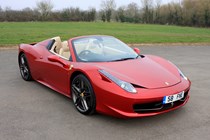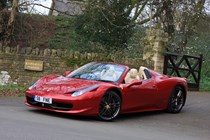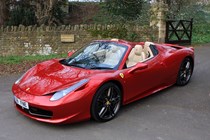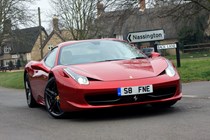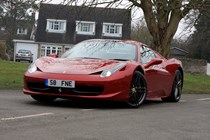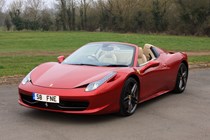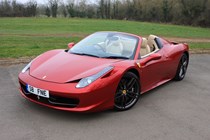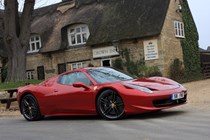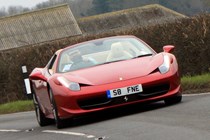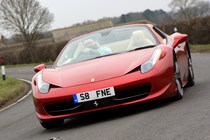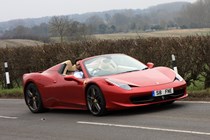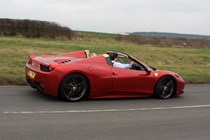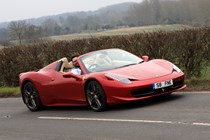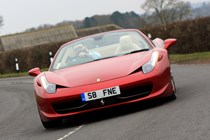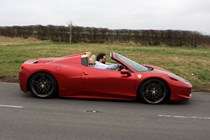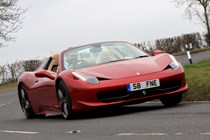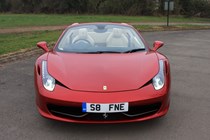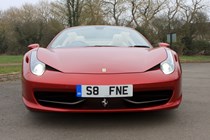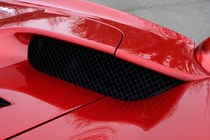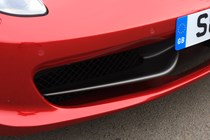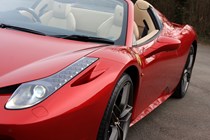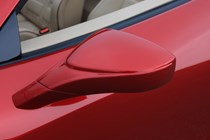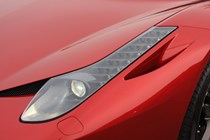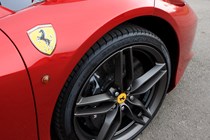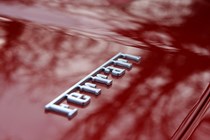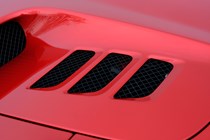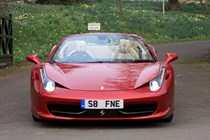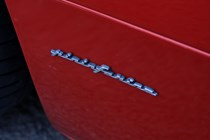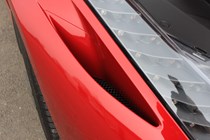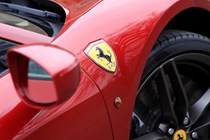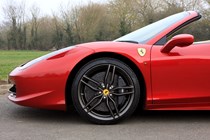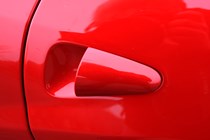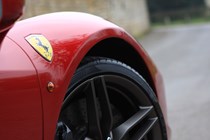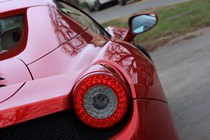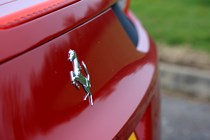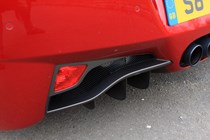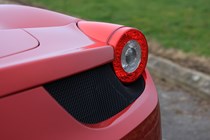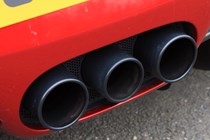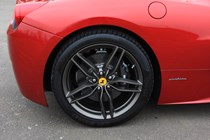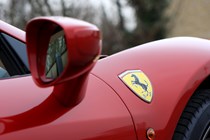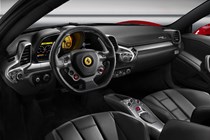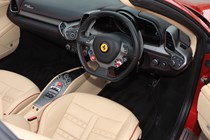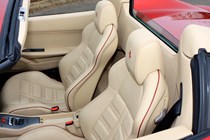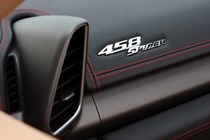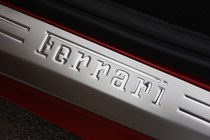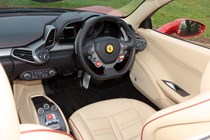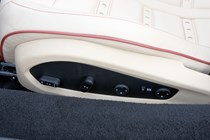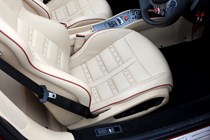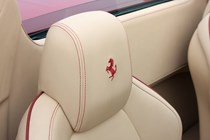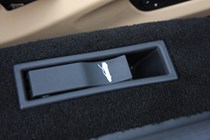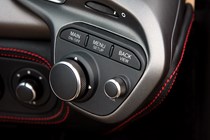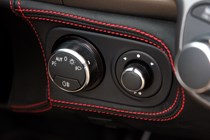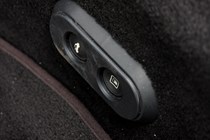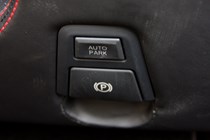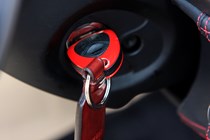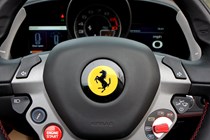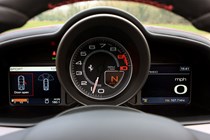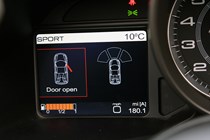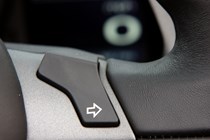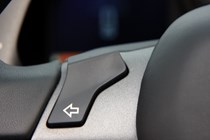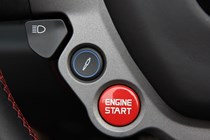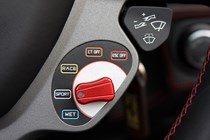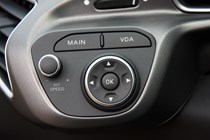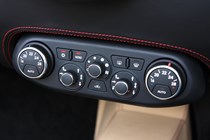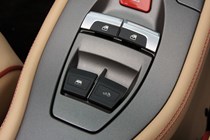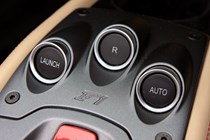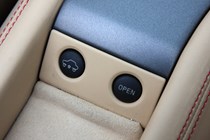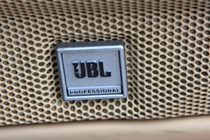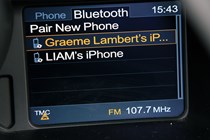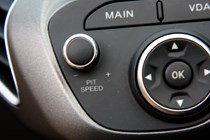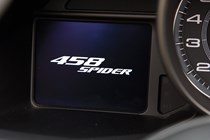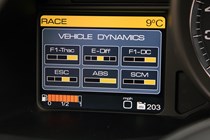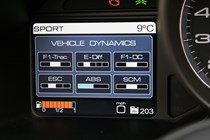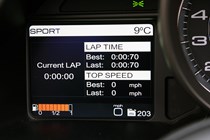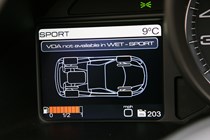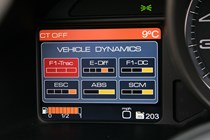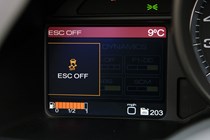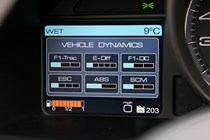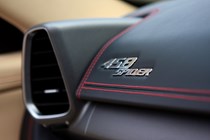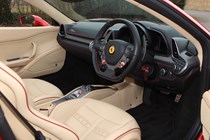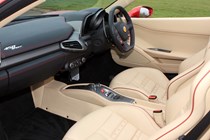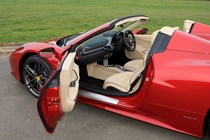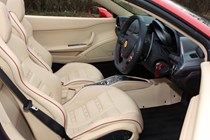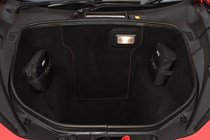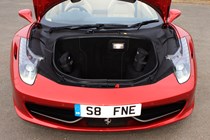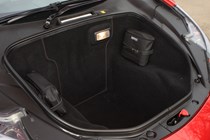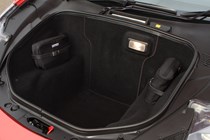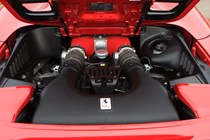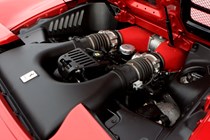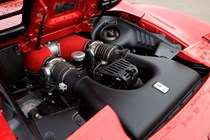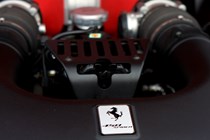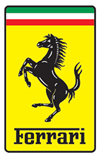
Ferrari 458 Spider engines, drive and performance
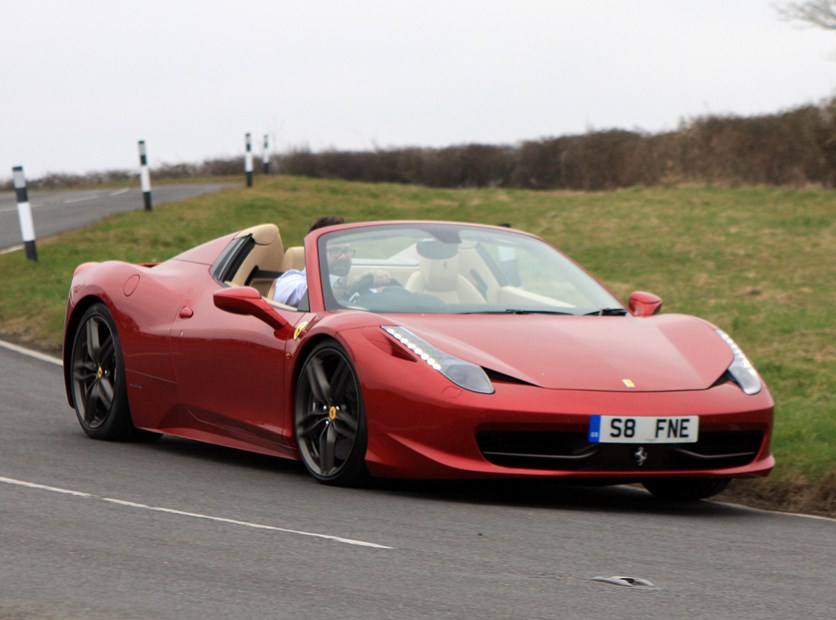
Whether cruising sun-kissed boulevards or pounding a challenging track, Ferrari 458 Spider performance deeply impresses.
Accessible performance
Metaphorically and literally at the Spider’s heart, given its location in the middle of the car, beats a 4.5-litre V8 engine giving the convertible its 458 name.
There are no turbochargers fitted to the 4,499cc engine to assist in the generation of 562bhp; instead it’s a free-revving, rapidly linear rush of speed as the Ferrari’s motor roars towards its 9,000rpm red line maximum. It’s enough to propel the 458 Spider to just over 199mph, but more impressive than that is how quickly it gains momentum.
With 540Nm of torque at your right foot’s command, eye-widening acceleration is a given. That the Ferrari doesn’t deliver its peak pulling power until 6,000rpm ensures your ears are treated to a resonant V8 rumble as the velocity increases.
How quick? It’ll cover 0-62mph in less than 3.4 seconds. Doubling the speed target to 124mph takes under 10.8 seconds from standstill. It feels fast too: scenery blurs past, air whooshes over your head, the engine’s grunt eggs you on from behind, telltale vibrations communicate the 458’s status through the wheel and seat – this Ferrari is a sensory delight.
As much as you’d want to, driving the 458 Spider quickly simply isn’t possible all of the time; there are occasions when you need to venture into urban areas and mix it with slow-moving traffic. This is far from a daunting prospect, the Ferrari responding appropriately to gentle caresses of the throttle pedal ensuring it’s smooth to pilot in built-up areas. That experience is heightened as the crackling exhaust note echoes off surrounding shop-fronts and offices blocks.
Seven-speed Formula 1-style gearbox
A great engine’s potential is stymied without a transmission that does it justice. Fortunately Ferrari has blessed the 458 Spider with a superb seven-speed gearbox.
Technically this is a manual transmission with two clutches, but you’ll notice it has neither a conventional gear lever or a clutch pedal – it can be driven as an automatic too. Manual changes are controlled by the large paddles behind the steering wheel – the right side for up changes, the left for down.
In so many sports cars, those paddles are superfluous: neither a tactile pleasure nor adding much to the driving experience. Not so with the 458 Spider, where there’s a genuine satisfaction derived from pulling the perfectly weighted and delightful-to-the-touch levers.
Its split personality means it works very effectively as an automatic too, with no lurching between ratios whether changing gears at higher speeds or when in town dealing with stop/start traffic. Selecting ‘Auto’ mode is actioned via a push button on the centre console; ‘R’ for reverse is next to it.
Launch control
On occasions where maximising traction off the line is the chief requisite, the 458 Spider’s launch control comes into its own.
Press the ‘Launch’ button on the centre console next to the ones for automatic mode and reverse, hold the brake pedal with your left foot and raise the engine revs with your right. As you release the left pedal the Ferrari surges forward, the electronic systems minimising wheelspin to ensure as little forward motion as possible is lost as the rear wheels get traction, offering the best possible getaway regardless of road surface.
Combine a convertible sports car weighing just 1,535kg, with 58 percent of its mass over the rear and 562bhp; you’ve got a recipe for enthralling handling, and that’s exactly what the Ferrari 458 Spider delivers.
Handling demands respect
Look at the performance figures on paper and it would be easy to dismiss this Ferrari as a weapon for going quickly in a straight line but less satisfyingly around corners. Not a bit of it: this is one powerful and playful sports car that will swap ends on you if you don’t handle it with the delicacy it demands and deserves.
Forget notions of grabbing the 458 Spider by the scruff of the neck and manhandling it forcefully through bends, for this Ferrari responds best to fluid, considered movements: tease the accelerator with a little more pressure than is necessary around familiar bends and the rear mischievously responds by stepping progressively and controllably away from the path established by the front wheels.
Ferrari has struck a fine balance with the steering’s weighting too, feeling neither too light or unnecessarily heavy, yet consistently channelling a level of communication about what the front wheels are up to. You feel constantly tuned in to their grip levels.
Five driving modes
Proving that the 458 Spider is no one-trick stallion, its different driving modes – adjusted using the steering wheel-mounted racing manettino control – vary the degree of electronic intervention, suspension stiffness and throttle responsiveness depending on the driver’s requirements in different conditions.
Selecting ‘Wet’ mode sees all the controls switched to maximum, complemented by the suspension dampers being in their most forgivingly compliant setting. Here the Spider is at its easiest to drive in all conditions, but also at its least satisfying on dry, high-grip surfaces.
‘Sport’ and ‘Race’ respectively ease the effects of traction and stability control but they will present themselves if the Ferrari senses the driver is about to lose control. ‘Race’ mode, a greasy road surface and temperatures barely above freezing will soon have many drivers realising the limits of their own abilities, as well as becoming familiar with where the electronics intervene.
Best reserved for track action are ‘CT Off’ and ‘ESC Off’, switching off the traction control only, and then the electronic stability software too, respectively. With no contemporary wizardry to spare your blushes, the latter setting in particular is purely man and machine.
Adaptive suspension
Suspending each of the 20-inch alloy wheels shod with very low-profile grip-boosting tyres, is a sophisticated arrangement with magnetically controlled dampers. Ferrari calls the system Magnetorheological Suspension Control 2 – or SCM2 – where a viscous fluid inside the damper is measured and adjusted magnetically every millisecond to maintain desired ride characteristics. The more intense the setting chosen on the manettino, the firmer the dampers are – but this can be overridden to deliver a more compliant ride.
Boosting traction levels, Ferrari’s E-Diff3 electronic differential works seamlessly with Ferrari’s advanced F1-Trac – an intelligent traction control system that not only meters power to the rear wheels based on how much grip they have at that given moment, but also how much the software anticipates they’ll have, based on measurements taken from elsewhere in the car, such as cornering forces, steering angle, throttle position, among others. The result is exit speeds from corners and on looser surfaces which seem barely comprehensible.
Allied to prodigiously powerful carbon ceramic brakes, sporting 398mm diameter discs up front and 360mm at the back, is Ferrari’s High Performance ABS system. Giving that some context, the 458 Spider should brake to a complete standstill from 62mph in just 32.8 metres, whereas the Highway Code suggests 55 metres for a ‘typical car’.
Spend just a few minutes behind the wheel of the Ferrari 458 Spider and the intoxicating nature of its handling has you hooked. Typical, it isn’t.


